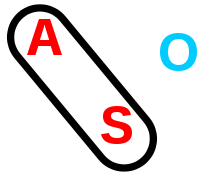- Martuthunira language
-
Martuthunira Spoken in Western Australia Extinct 6 August 1995 with the death of Algy Paterson. Language family Pama–Nyungan- Southwest
- Ngayarta
- Martuthunira
- Ngayarta
Language codes ISO 639-3 vma This page contains IPA phonetic symbols in Unicode. Without proper rendering support, you may see question marks, boxes, or other symbols instead of Unicode characters. Martuthunira is an extinct Australian Aboriginal language, that was the traditional language of the Martuthunira people of Western Australia.
The last fluent speaker of Martuthunira, Algy Paterson, died on 6 August 1995. From 1980 he worked with the linguist Alan Dench to preserve Martuthunira in writing, and it is from their work that most of our knowledge of Martuthunira today comes.
Contents
Name
The name Martuthunira, pronounced [maɽʊðʊneɻa] by native speakers, means "those who live around the Fortescue River". It has many spelling variants, including: Maratunia, Mardadhunira, Mardathon, Mardathoni, Mardathoonera, Mardatuna, Mardatunera, Mardudhoonera, Mardudhunera, Mardudhunira, Mardudjungara, Marduduna, Mardudunera, Marduthunira, Mardutunera, Mardutunira, Marduyunira, Martuthinya, and Martuyhunira.
Classification
Martuthunira is classified as a member of the Ngayarta or Ngayarda subgroup of the Southwest Pama–Nyungan languages. Under Carl Georg von Brandenstein's 1967 classification, Martuthunira was classed as a Coastal Ngayarda language, but the separation of the Ngayarda languages into Coastal and Inland groups is no longer considered valid.
Southwest Pama–Nyungan Ngayarta Palyku
Nyamal
Yinhawangka
Ngarluma
Kariyarra
Martuthunira
Nhuwala
Nyunga languages
Mirniny languages
Wati languages
Marrngu languages
Ngumpin languages
Nannga languages
Phonology
Martuthunira has a fairly standard Australian phonology. R.M.W. Dixon uses it as a prototypical example in his 2002 book Australian Languages: Their nature and development.
Consonants
Peripheral Laminal Apical Bilabial Velar Palatal Dental Alveolar Retroflex Stop p k c t̪ t ʈ Nasal m ŋ ɲ n̪ n ɳ Lateral ʎ l̪ l ɭ Rhotic r ɻ Semivowel w j The laminal stop /c/ has a voiced allophone [ɟ] between vowels.
Between vowels, the dental stop /t̪/ can become [d̪], [ð], [ð̞], [ɻ], [j], [w], or even simply a syllable break. In some words one particular realization is always used, in others there is free variation.
The alveolar stop /t/ has a voiced allophone [d] after a nasal. It occurs between vowels only in a handful of words, probably all loanwords, where it has a longer period of closure than the other stops [tː].
The retroflex stop /ʈ/ has a voiced allophone [ɖ] after a nasal, and a flapped allophone [ɽ] between vowels.
Besides the voiced allophones mentioned above, stops are usually voiceless and unaspirated.
The laterals have pre-stopped allophones [ᶜʎ ᵗ̪l̪ ᵗl ʈɭ] when they occur in a syllable coda.
The alveolar rhotic /r/ is a tap [ɾ] between vowels, and a usually voiceless trill [r̥] finally.
The palatal semivowel /j/ may be dropped initially before /i/, but the equivalent dropping of /w/ before initial /u/ is rare.
Vowels
Front Back High i iː u uː Low a aː /i/ is usually realized as [ɪ], though it may be realized as [i] near palatal consonants and as [e] near /r/, /n/ or /l/.
/iː/ is realized as [ɪː] in morpheme-initial syllables, [eː] elsewhere.
/u/ is usually realized as [u] in stressed syllables, and [ʊ] in unstressed syllables. /u/ is fronted to varying degrees when near laminal consonants, being most fronted [ʉ] when preceded by a dental consonant. It has an unrounded allophone [ɨ] when followed by /ɻ/.
/uː/ is usually [ʊː], but is lowered to [ɔː] when preceded by a dental consonant.
/a/ is usually [ɐ] when stressed, [ə] when unstressed. Following a laminal consonant, more so after dentals than palatals, it is fronted towards [ɛ]. When preceded by /w/ and followed by a velar consonant, it is realized as [ɒ].
/aː/ is usually simply [ɐː].
Phonotactics
All Martuthunira words begin with one of the following consonants, from most to least frequent: /p k m w ŋ c t̪ j ɲ n̪/. This consists of only peripheral and laminal stops, nasals, and semivowels. Words may end in a vowel, or one of /n r l ɲ ɳ ʎ ɭ/.
Grammar
Accusative alignment
Unlike most Australian languages, which exhibit ergativity, Martuthunira and the other Ngayarta languages have an accusative alignment. That is, the subjects of transitive verbs are treated the same as the subjects of intransitive verbs, while the objects are treated differently.
The Martuthunira nominative case is unmarked (zero). The accusative case, which descends from a suffix that originally marked the dative case, takes the form /-ŋu/ on proper nominals; /-ku/ on common nominals ending in a nasal (/ɲ n ɳ/); /-ju/ on common nominals ending in a lateral or a rhotic (/ʎ l ɭ r/); and vowel lengthening for common nominals ending in vowels. The accusative case is identical to the genitive case, except for common nominals ending in vowels, where the genitive suffix is /-wu/.
Case stacking
Martuthunira exhibits case stacking, where nouns take multiple case suffixes for agreement. For example:
Ngayu nhawulha ngurnu tharnta-a mirtily-marta-a thara-ngka-marta-a. I saw that euro-ACC joey-PROP-ACC pouch-LOC-PROP-ACC I saw that euro with a joey in its pouch. - Tharnta is the object of the verb, and so is in the accusative case.
- Mirtily gets a proprietive suffix, which indicates that it is possessed by the euro. However, because it modifies tharnta, it additionally gets an accusative suffix to agree with it.
- Thara gets a locative suffix, which indicates that it is what the joey is in. It also gets a proprietive suffix to agree with mirtily, and then an accusative suffix to agree with tharnta.
References
- Dench, Alan Charles (1995). Martuthunira: A Language of the Pilbara Region of Western Australia. Canberra: Pacific Linguistics. Series C-125. ISBN 0-85883-422-7. http://www.linguistics.uwa.edu.au/staff/alan_dench/martuthunira.
External links
- Martuyhunira at Ethnologue
- Handbook of Western Australian Languages South of the Kimberley Region — Martuthunira
Palyku · Panyjima · Ngarla · Nyamal · Jurruru† · Yinhawangka · Ngarluma and Kariyarra · Martuthunira† · Nhuwala† · Yinjibarndi and Kurrama
Categories:- Ngayarda languages
- Extinct languages of Australia
- Southwest
Wikimedia Foundation. 2010.

